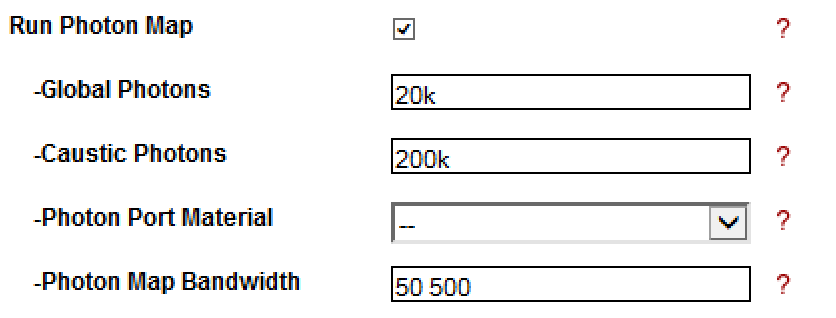Dear All,
I am looking for a method to investigate external glare from building facades using forward ray tracing to predict critical locations and then quantifying reflected daylight received at the critical positions with a backward ray tracing time-series simulation (reference paper attached - Yang et al. 2013, Simulation of Reflected Daylight From Building Envelopes). I have been using DIVA for Rhino/Grasshopper but as far as I'm aware this is incapable of forward ray tracing to predict critical locations. Also as I am interested in reflected light primarily from the building being investigated at the locations of interest (rail corridor), any glare studies I run at these locations do not provide the results I am after. As light direct from the sun is included in the results.
I'd appreciate any help in advice or in directing me to applicable Radiance docs.
I'm new to Radiance but have programming experience.
Thanks,
Tom
Simulation of reflected daylight from building envelopes.pdf (1.85 MB)
Dear Tom, I'd recommend you to contact Prof Alstan Jakubiec in Singapore
University of Technology and Design (SUTD) who is the main developer of
DIVA for Rhino and has done extensive studies on daylight and glare,
especially the impact of glare generated by the reflection of solar panels
near airport to the airplane flight path, if I recall correctly. - Ji
···
On Sat, Nov 5, 2016 at 4:00 AM Tom Moyle <[email protected]> wrote:
Dear All,
I am looking for a method to investigate external glare from building
facades using forward ray tracing to predict critical locations and then
quantifying reflected daylight received at the critical positions with a
backward ray tracing time-series simulation (reference paper attached –
Yang et al. 2013, Simulation of Reflected Daylight From Building
Envelopes). I have been using DIVA for Rhino/Grasshopper but as far as I’m
aware this is incapable of forward ray tracing to predict critical
locations. Also as I am interested in reflected light primarily from the
building being investigated at the locations of interest (rail corridor),
any glare studies I run at these locations do not provide the results I am
after. As light direct from the sun is included in the results.
I’d appreciate any help in advice or in directing me to applicable
Radiance docs.
I’m new to Radiance but have programming experience.
Thanks,
Tom
_______________________________________________
Radiance-general mailing list
[email protected]
http://www.radiance-online.org/mailman/listinfo/radiance-general
Hello Tom,
Since I've been mentioned by name, I thought I'd reply :). As far as I know, no GUI is perfect for your study right now, but since you are using DIVA, here are some thoughts about how you could proceed.
* DIVA does have support for the photon map extension through rendered
images. Under Advanced Parameters, just click 'Run Photon Map.' This
will turn Radiance into a forward ray tracing mode. I have been
meaning to for a while, but have not implemented this on the rtrace
/ sensor-based calculation side yet. I recommend to set the photon
port material to the specular material you are using to reflect rays.
* Another option is to use a mirror material to track the locations of
solar reflections as per this presentation by Stephen Wasilewski
<http://radiance-online.org/community/workshops/2015-philadelphia/presentations/day3/150816_radconf_wasilewski.pdf>.
The advantage is that standard Radiance can be used, and the method
will work in renderings and grid-based calculations in DIVA. The
downside is that having many mirror materials in a scene will make
the calculations substantially slower. If your glare-causing facade
is curved, you will need to turn it into faceted pieces before using
this method.
* Finally, Ji references our paper on reflected solar glare
<http://asd.sutd.edu.sg/dcc/papers/Jakubiec,Reinhart_2014_AssessingDisabilityGlarePotentialDueToSpecularReflections.pdf>.
This was using standard Radiance renderings for a single point of
view (you can assign multiple points of view in DIVA and run them
with one command). We just rendered images for every 10 minutes of
sunlit time in the year and used pcomb to combine them into spatial
time maps (see Figures 5 and 6 in the paper). I guess you are
primarily a GUI user from your post; however, I'd be happy to share
the old scripts with you if they might be useful.
Best regards,
Alstan
···
--
J. Alstan Jakubiec
Assistant Professor
Architecture and Sustainable Design
Singapore University of Technology and Design
8 Somapah Road, Singapore 487372
telephone: +65 6499 4530, e-mail: [email protected]
Design for Climate and Comfort Lab <http://asd.sutd.edu.sg/dcc/> | profile <http://asd.sutd.edu.sg/faculty/j-alstan-jakubiec/> | DIVA <http://diva4rhino.com/> | Opaque Materials Database <http://lighting-materials.com/>
On 11/11/2016 1:45 PM, Joe Smith wrote:
Dear Tom, I'd recommend you to contact Prof Alstan Jakubiec in Singapore University of Technology and Design (SUTD) who is the main developer of DIVA for Rhino and has done extensive studies on daylight and glare, especially the impact of glare generated by the reflection of solar panels near airport to the airplane flight path, if I recall correctly. - Ji
On Sat, Nov 5, 2016 at 4:00 AM Tom Moyle > <[email protected] <mailto:[email protected]>> > wrote:
Dear All,
I am looking for a method to investigate external glare from
building facades using forward ray tracing to predict critical
locations and then quantifying reflected daylight received at the
critical positions with a backward ray tracing time-series
simulation (reference paper attached – Yang et al. 2013,
Simulation of Reflected Daylight From Building Envelopes). I have
been using DIVA for Rhino/Grasshopper but as far as I’m aware
this is incapable of forward ray tracing to predict critical
locations. Also as I am interested in reflected light primarily
from the building being investigated at the locations of interest
(rail corridor), any glare studies I run at these locations do
not provide the results I am after. As light direct from the sun
is included in the results.
I’d appreciate any help in advice or in directing me to applicable
Radiance docs.
I’m new to Radiance but have programming experience.
Thanks,
Tom
_______________________________________________
Radiance-general mailing list
[email protected]
<mailto:[email protected]>
http://www.radiance-online.org/mailman/listinfo/radiance-general
_______________________________________________
Radiance-general mailing list
[email protected]
http://www.radiance-online.org/mailman/listinfo/radiance-general
